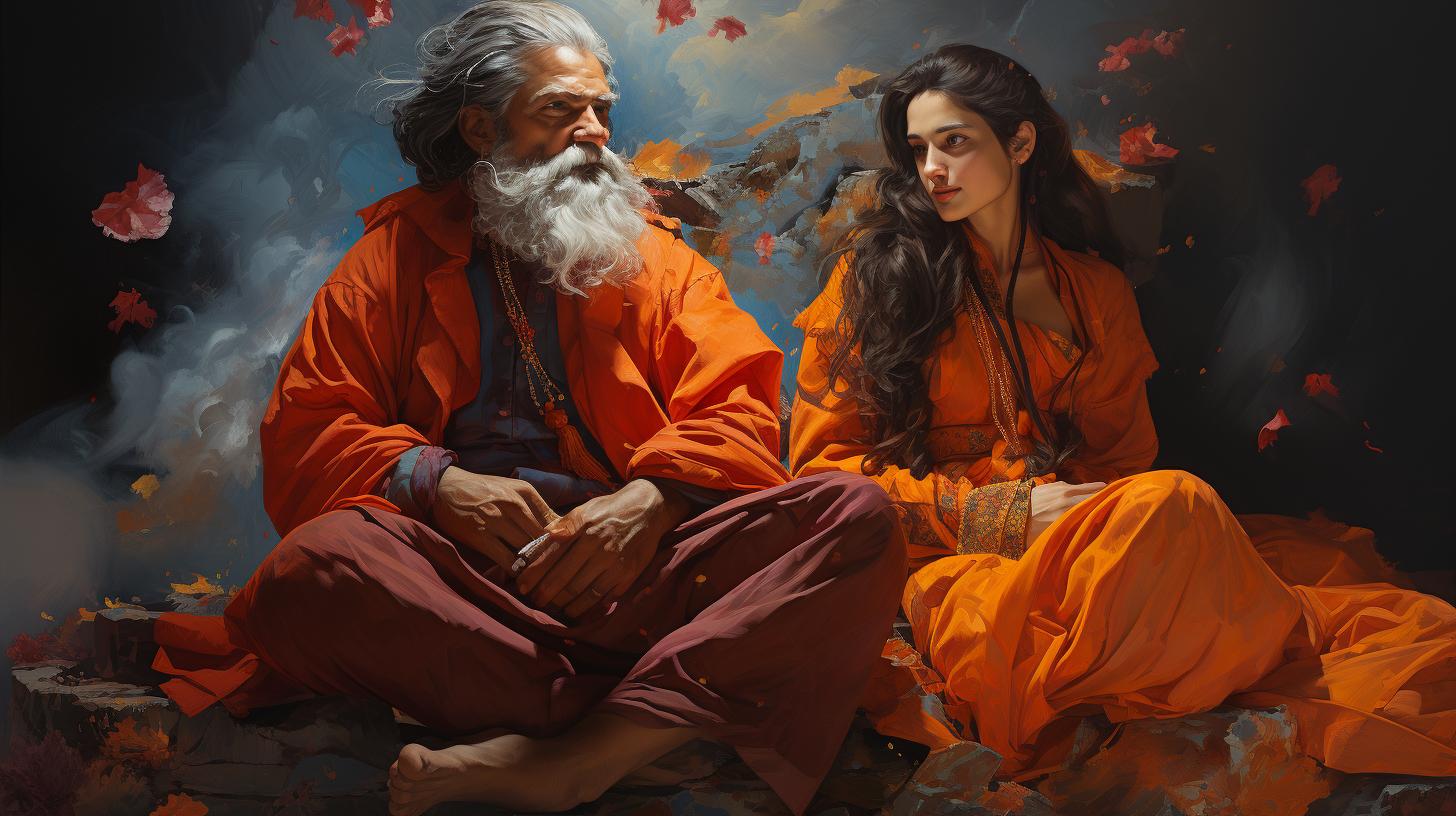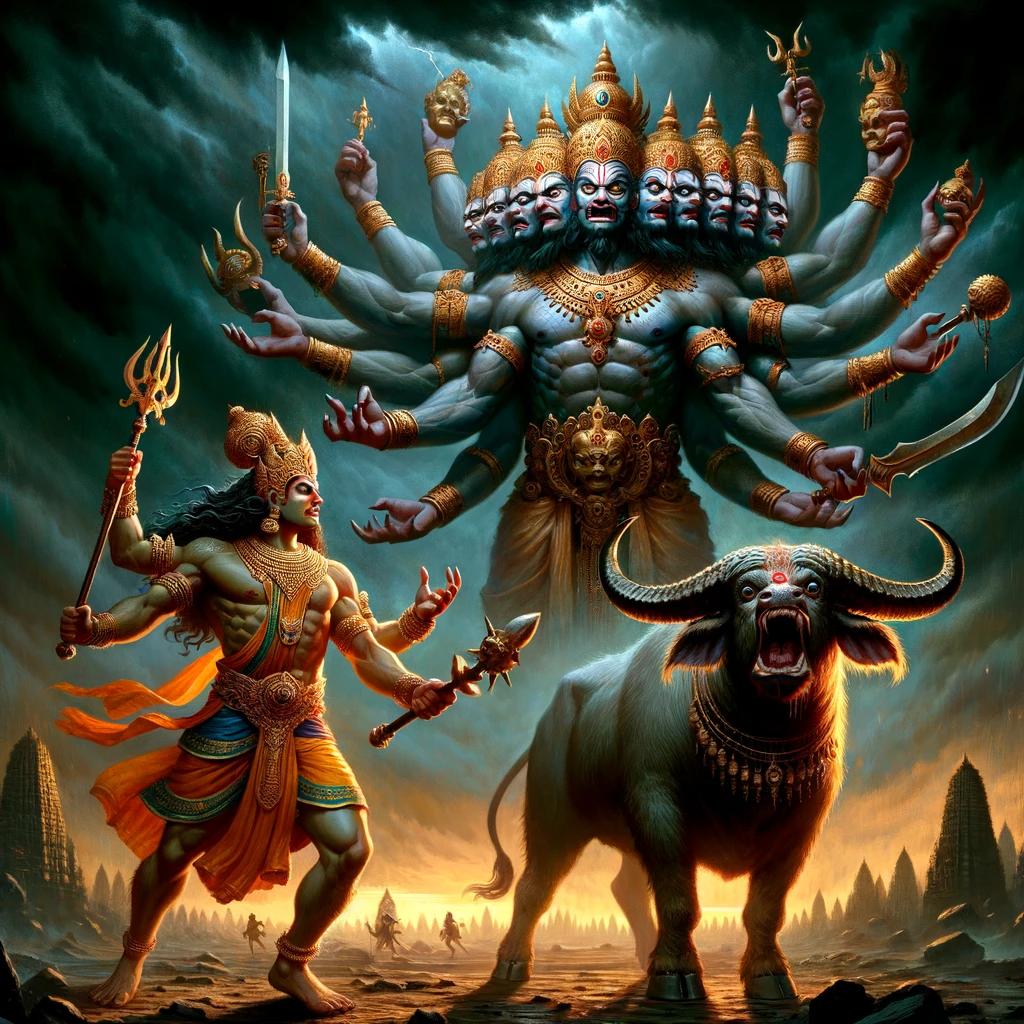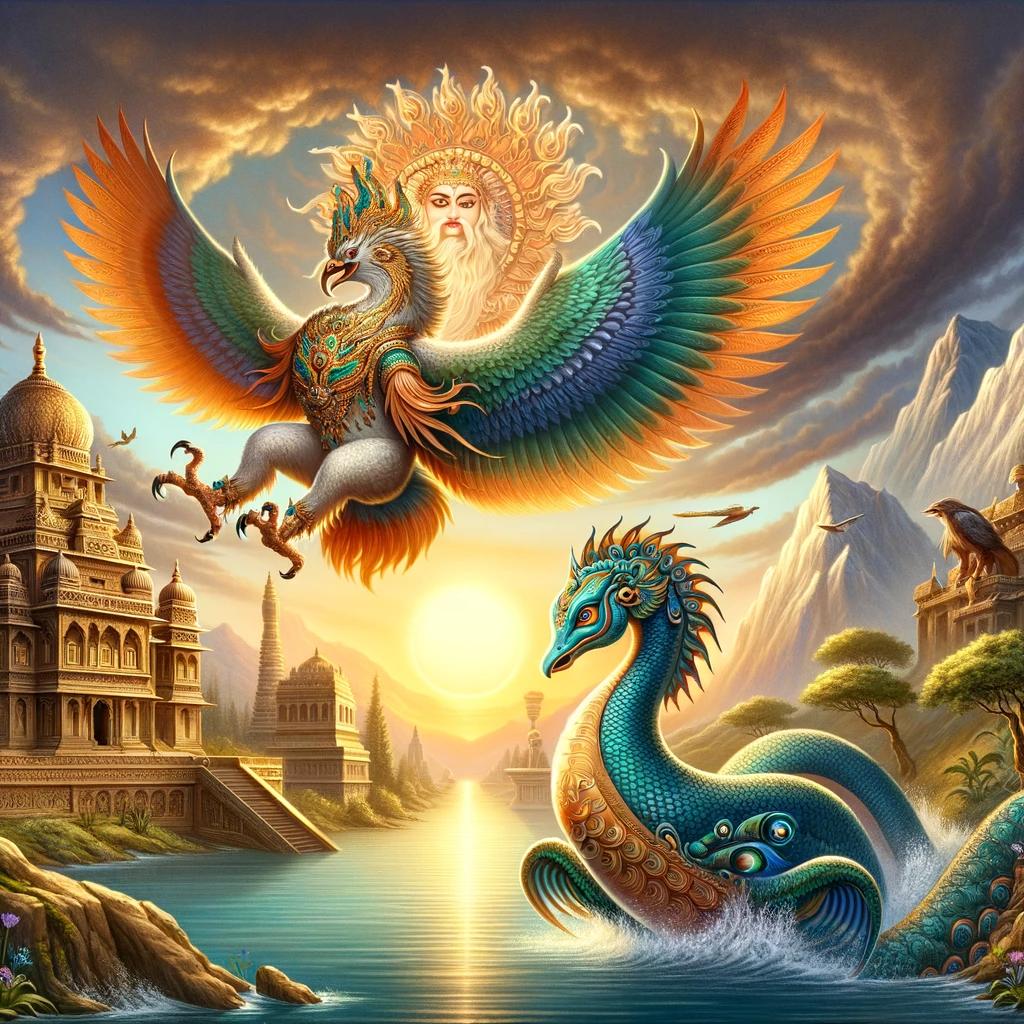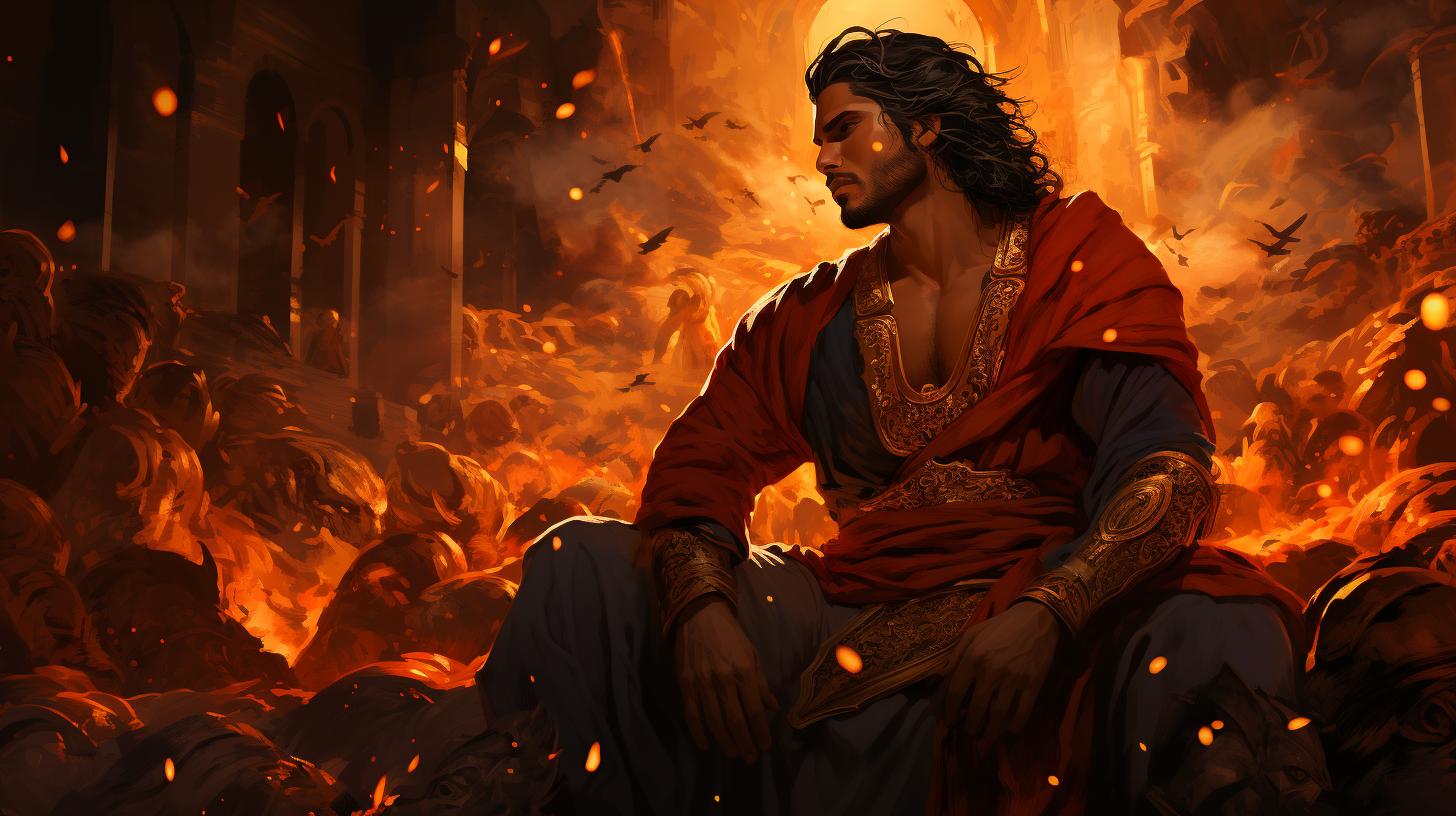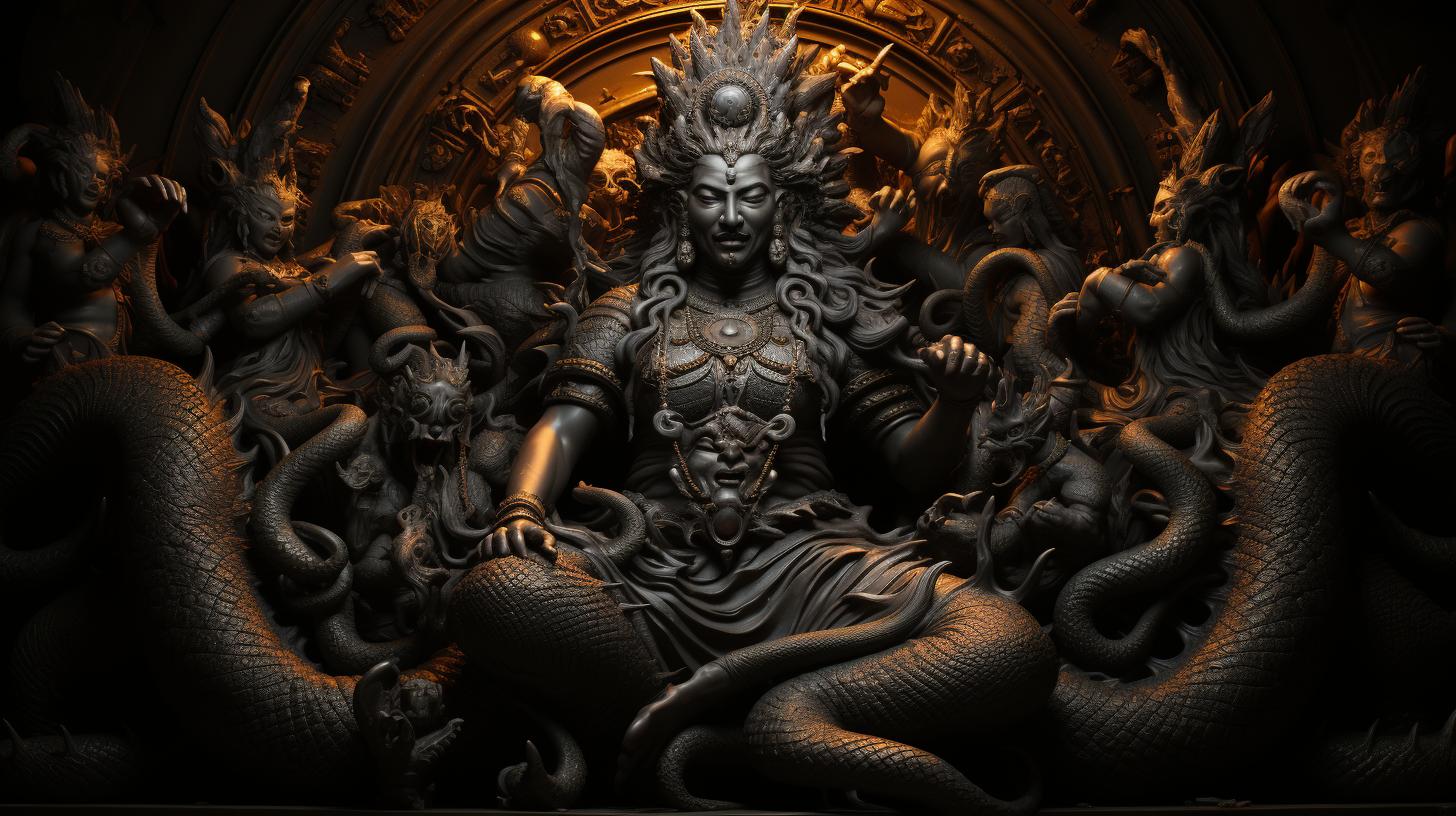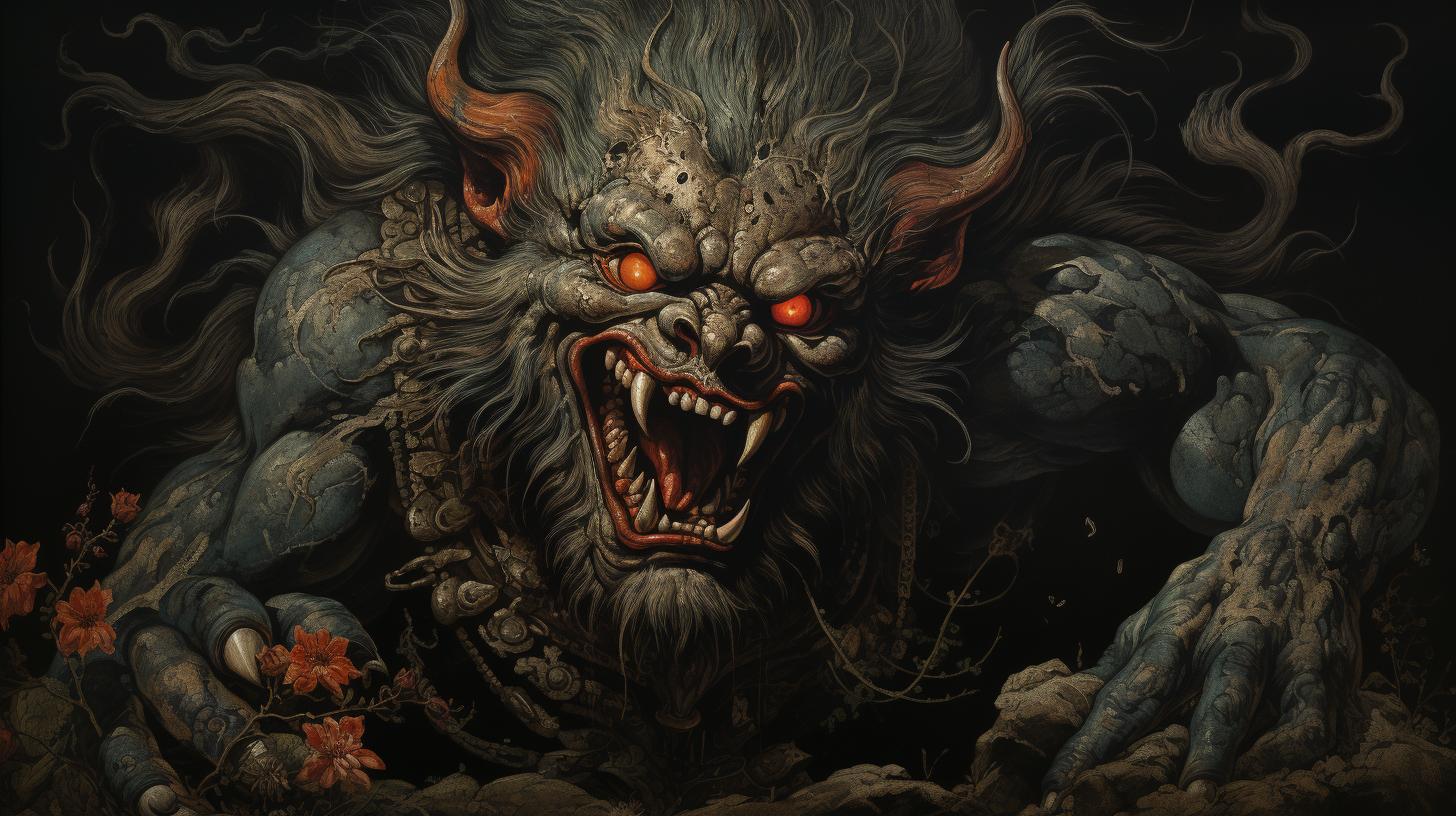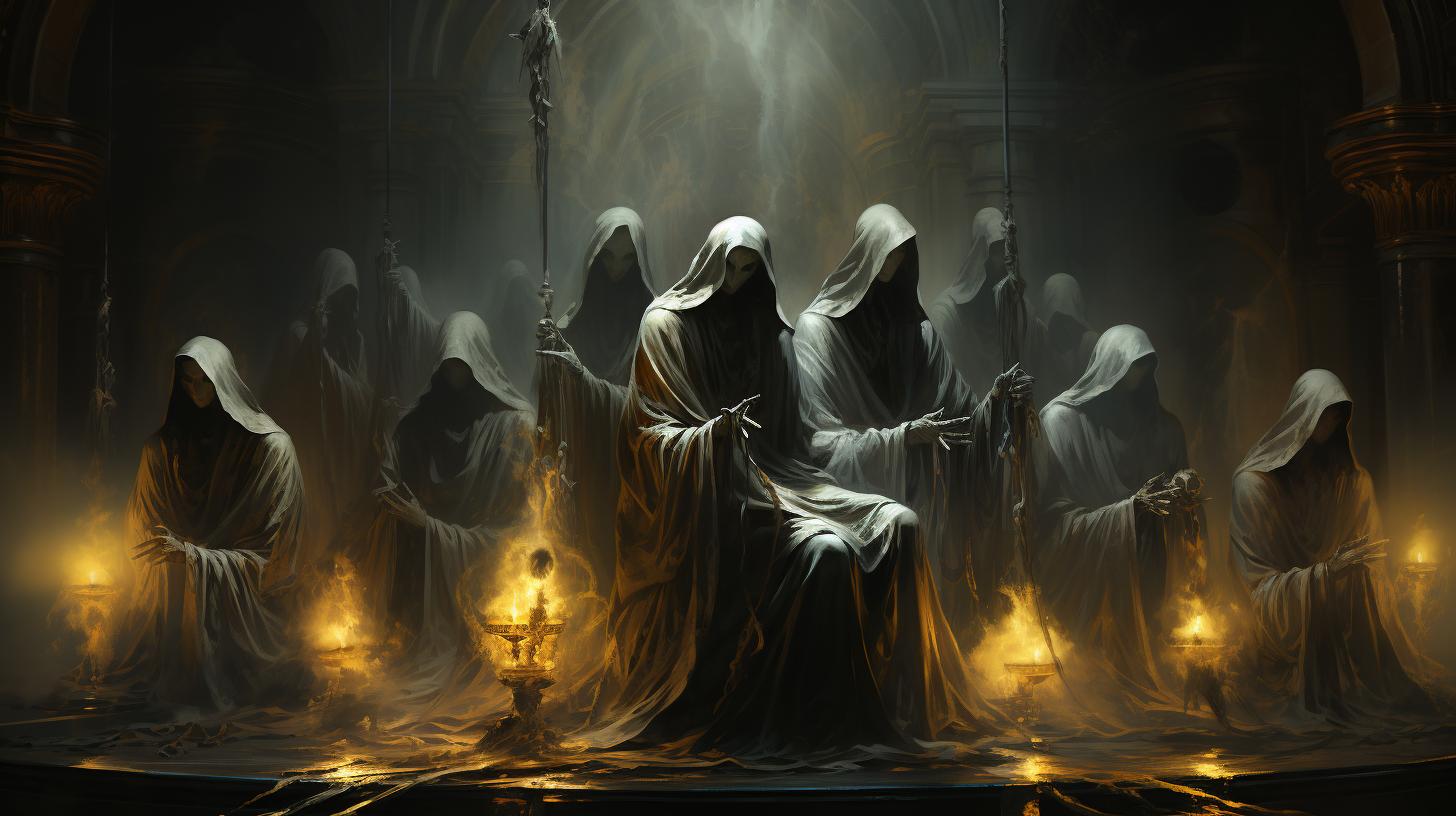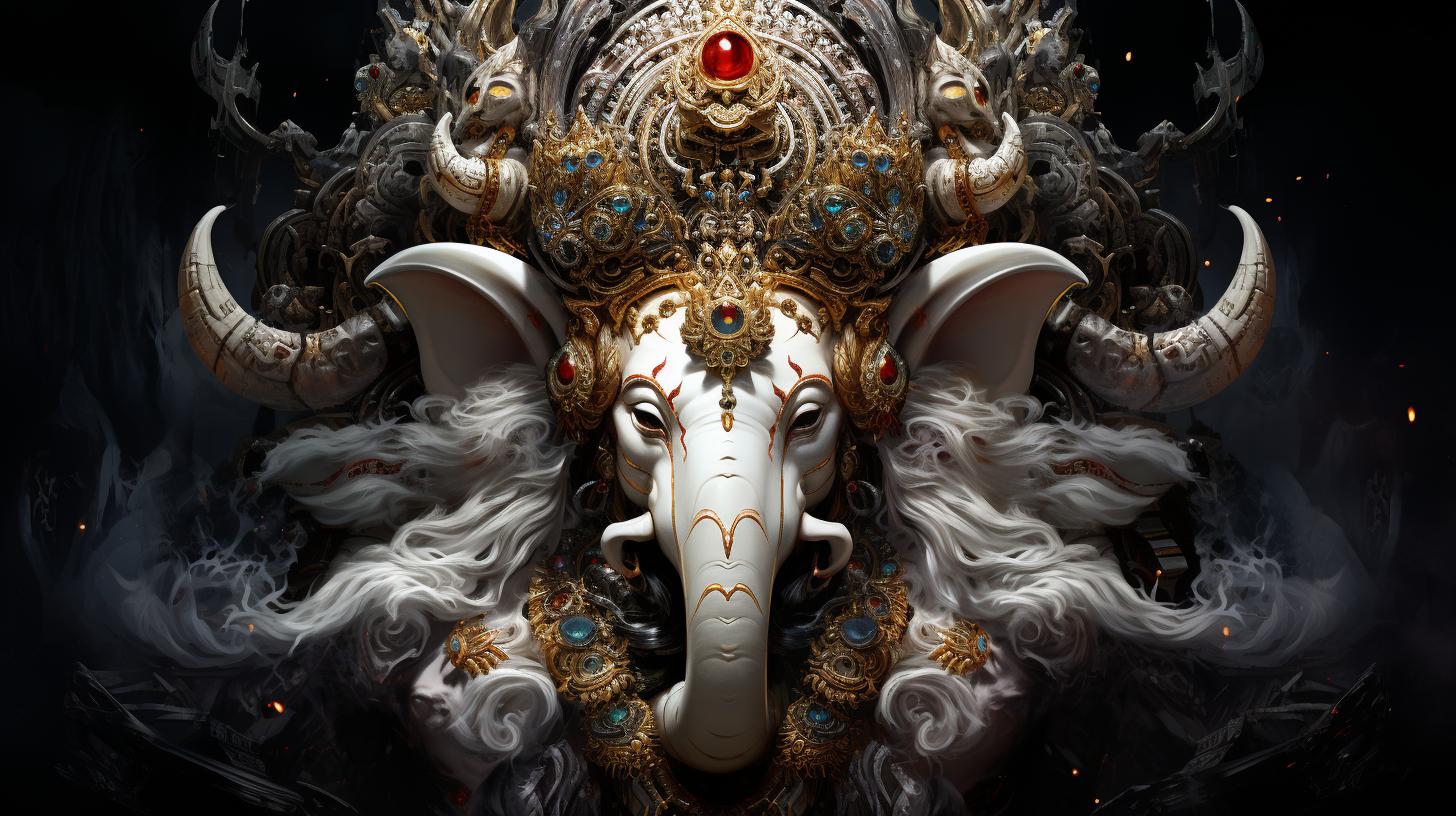Vishwamitra and Menaka: A Tale of Love and Separation in Hindu Mythology

Vishwamitra and Menaka is a captivating tale in Hindu mythology. Menaka, an apsara sent by Indra, seduces the sage Vishwamitra, leading him to abandon his ascetic practice for love.
Their union results in Menaka’s pregnancy and the birth of a daughter. However, Menaka has to return to the heavens, leaving her lover and their child behind. Vishwamitra leaves the daughter, named Shakuntala, in the care of Sage Kanva.
Shakuntala later becomes significant in ancient Indian history through her marriage to King Dushyanta and the birth of their son, Bharata. This story invites reflection on the role of apsaras in Hindu mythology.
The Story of Vishwamitra and Menaka
Introduction to Vishwamitra and Menaka
Vishwamitra and Menaka is a captivating tale in Hindu mythology that unfolds the passionate love story between the sage Vishwamitra and the celestial nymph Menaka. Their relationship transcends boundaries and has enduring consequences.
Background of Vishwamitra – From King to Sage
Vishwamitra, once a mighty king, embraced a life of penance to attain the stature of a sage. His transformation from a ruler to a great ascetic showcases his relentless pursuit of spiritual enlightenment.
The Role of Menaka as an Apsara
Menaka, an apsara sent by the gods to seduce Vishwamitra, plays a pivotal role in the tale. Her seductive charm challenges Vishwamitra’s resolve, putting his ascetic practice to the test.
“`
- Mysterious and enchanting, Menaka tempts Vishwamitra, putting his path to spiritual awakening in jeopardy.
- Her role as an apsara raises questions about divine manipulations and the conflict between earthly pleasures and spiritual progression.
The Love and Union of Vishwamitra and Menaka
The story of Vishwamitra and Menaka is a captivating tale of love, temptation, and the consequences that follow.
It showcases the complex relationship between the apsara Menaka and the sage Vishwamitra, and how their union shapes their lives and the destiny of their daughter.
Menaka’s Mission to Seduce Vishwamitra
Menaka, the celestial nymph sent by Indra, embarks on a mission to seduce the highly revered sage Vishwamitra.
Her mission, fueled by Indra’s desire to break Vishwamitra’s penitence, sets the stage for a passionate encounter between the two.
Vishwamitra’s Temptation and Relationship with Menaka
Vishwamitra, initially immersed in his ascetic practice, finds himself irresistibly drawn towards Menaka’s allure. He succumbs to his desires, casting aside his austere lifestyle, and engages in a passionate relationship with Menaka, momentarily forgetting his spiritual pursuits.
Consequence: Menaka’s Pregnancy and the Birth of a Daughter
The intense love between Vishwamitra and Menaka leads to Menaka’s pregnancy, and she gives birth to their daughter. However, their joy is short-lived as Menaka is compelled to return to the heavens, leaving behind Vishwamitra and their child.
This separation sets in motion a series of events that shape the destiny of their daughter and the wider narrative of ancient Indian history.
As the tale unfolds, we witness the power of love, the pull of worldly desires, and the profound impact of choices made in the face of duty and destiny.
The story of Vishwamitra and Menaka serves as a timeless reminder of the complexities of human relationships and the consequences that accompany them.
The Separation and Fate of Menaka and Vishwamitra
After their passionate union, Menaka is compelled to return to the celestial realms, leaving behind her beloved Vishwamitra and their daughter.
This separation marks a turning point in their lives and sets the stage for their individual fates.
Menaka’s Return to Heaven and Leaving Her Loved Ones Behind
With a heavy heart, Menaka bids farewell to Vishwamitra and their child, forced to fulfill her duties as an apsara in the celestial abode. She ascends to the heavens, filled with sorrow and longing for the family she left behind.
Vishwamitra’s Decision to Abandon His Daughter Shakuntala
Riddled with pain and conflicting emotions, Vishwamitra makes the heart-wrenching choice to leave his beloved daughter, Shakuntala, in the care of the sage Kanva. Recognizing the challenges he faces as a sage, he forsakes his paternal responsibilities, believing it to be in her best interest.
The Role of Sage Kanva in Shakuntala’s Life
Sage Kanva becomes the nurturing figure in Shakuntala’s life, fostering her growth and providing her with a loving home. He raises her as his own, sheltering her from the knowledge of her true parentage until the time is right.
Intricately entwined, the separation of Menaka and Vishwamitra brings forth a series of events that shape the destiny of their daughter, Shakuntala, and ultimately influences the course of ancient Indian history.
Shakuntala’s Significance in the Ancient Indian History
Shakuntala, the daughter of Menaka and Vishwamitra, holds great significance in ancient Indian history due to her marriage to King Dushyanta and the legacy she leaves behind.
Shakuntala and her Marriage to King Dushyanta
Shakuntala’s story takes a pivotal turn when she meets King Dushyanta while living in sage Kanva’s hermitage.
The king is enamored by Shakuntala’s beauty and purity, and they enter into a secret wedding ceremony known as Gandharva Vivaha.
However, destiny plays a cruel trick on Shakuntala as a curse causes Dushyanta to forget about their marriage.
Heartbroken, she gives birth to their son Bharata and raises him alone in the secluded surroundings of the forest.
Legacy of Shakuntala and her Son Bharata
Bharata, son of Shakuntala and Dushyanta, goes on to become a legendary figure in Indian history. He becomes the founder of the Bharata dynasty, from which the country derives its name, Bharatvarsha.
Furthermore, Bharata’s descendants play prominent roles in the epic Mahabharata, one of the most revered scriptures in Hindu mythology. Shakuntala’s lineage and her son’s contributions solidify her position as an influential figure in ancient Indian history.
- Shakuntala’s marriage to King Dushyanta at the hermitage
- The secrecy and significance of Gandharva Vivaha
- Dushyanta’s unfortunate memory loss due to a curse
- Shakuntala’s devotion and upbringing of her son Bharata
- Bharata’s establishment of the Bharata dynasty
- Shakuntala’s legacy and influence on subsequent generations
Shakuntala’s journey captures the essence of love, sacrifice, and the profound impact an individual can have on shaping the course of history.
Alternate Version: Menaka’s Revelation and the Curse
In an alternate version of the story of Vishwamitra and Menaka, their relationship takes a different turn. Instead of simply seducing Vishwamitra, Menaka falls in love with him and decides to reveal the truth about her mission to him.
She confesses her deep feelings and the genuine connection they share, hoping Vishwamitra would understand and accept her.
However, Vishwamitra, overwhelmed by his commitment to his ascetic practice, cannot let go of his anger and frustration.
Enraged by Menaka’s deception, he curses her to be separated from him forever. This curse not only distances Menaka from Vishwamitra but also separates her from their daughter, leaving both of them heartbroken and shattered.
This alternate version highlights the complex emotions and conflicts within the relationship of Vishwamitra and Menaka. It raises questions about the consequences of their choices and the profound impact it has on their lives and the lives of their loved ones.
Despite the tragic outcome, this version sheds light on the depth of Menaka’s love and her desperate attempt to salvage their relationship. It also portrays Vishwamitra as a tormented soul, torn between his duty as a sage and his own human desires, ultimately leading to the tragic curse that echoes through their lives.
Apsaras in Hindu Mythology: Reflections and Themes
Apsaras, the celestial nymphs of Hindu mythology, play a significant role in various stories and legends. They are often depicted as mesmerizing and enchanting beings who possess extraordinary beauty and grace.
In the context of the story of Vishwamitra and Menaka, the character of Menaka showcases a compelling portrayal of a tragic figure.
Depiction of Menaka as a Tragic Figure
Menaka’s role in the narrative of Vishwamitra and Menaka highlights her vulnerability and the consequences of her actions. As an apsara sent by Indra to seduce Vishwamitra and break his penance, Menaka becomes deeply enamored with him.
Her love for him leads her to abandon her heavenly abode and indulge in a passionate romance, forsaking her celestial nature.
However, their blissful union is short-lived. Menaka’s pregnancy and the subsequent birth of their daughter become the turning point in their story. As her duties as an apsara call her back to the heavens, Menaka is torn between her love for Vishwamitra and her duty to her celestial origins.
Forced to leave behind her lover and their child, Menaka’s separation becomes a heart-wrenching tragedy that resonates with the readers.
Vishwamitra’s Devastation and the Curse’s Impact
The separation from Menaka and their daughter shakes Vishwamitra to his very core. While he had forsaken his ascetic practice for love, the loss of Menaka and their child leaves him devastated.
This emotional turmoil shapes his subsequent journey towards spiritual enlightenment and self-discovery.
Furthermore, Vishwamitra’s decision to curse Menaka, depriving her of any future union with him and their daughter, amplifies the tragic nature of their relationship. The impact of his curse on their lives raises questions about the extent of his sorrow and the complexity of their bond.
The narrative of Vishwamitra and Menaka, with its exploration of Menaka’s tragic depiction and the devastating curse’s impact on Vishwamitra, showcases the deep emotional aspects intertwined within the realms of Hindu mythology.
Vishwamitra: The Esteemed Sage
Vishwamitra, known as one of the most revered rishis in ancient India, holds a significant position in Hindu mythology. His contributions as a Brahmarshi and his mastery over the Vedic scriptures are highly regarded.
Vishwamitra’s Position as a Brahmarshi and his Vedic Contributions
Vishwamitra’s stature as a Brahmarshi, one of the highest ranks among the sages, highlights his incredible knowledge and spiritual achievements. He is credited with writing a substantial portion of Mandala 3 of the Rigveda, including the renowned Gayatri Mantra.
The Gayatri Mantra, an ancient Vedic chant, holds great significance and is considered a powerful invocation for enlightenment. Throughout history, only a select few enlightened souls, numbering just 24, have fully grasped its profound meaning.
Conflict with Sage Vasishtha and the Quest for Brahmarishi Status
Vishwamitra’s quest for recognition as a Brahmarishi led him into a fierce conflict with the revered sage Vasishtha. This rivalry stemmed from Vishwamitra’s desire to possess the divine cow Kamadhenu, which Vasishtha owned.
In his pursuit of attaining the status of a Brahmarishi equal to Vasishtha, Vishwamitra underwent rigorous penance and spiritual practices. However, despite his relentless efforts, he faced defeat and decided to embark on his own path of penance and self-discovery.
Other Episodes, Works, and Descendants of Vishwamitra
The life of Vishwamitra is not only marked by his conflicts and accomplishments but also encompasses various other episodes and noteworthy moments. His exploits, works, and descendants contribute to the rich tapestry of his legacy in Hindu mythology.
While exploring these aspects of Vishwamitra’s life, we delve into his significance as a sage and his impact on ancient Indian history. His story serves as a timeless inspiration for seekers of knowledge and spiritual enlightenment.
Vishwamitra and Menaka in Popular Culture
The captivating story of Vishwamitra and Menaka has found its place in various forms of popular culture, from literature to performing arts. Their tale of forbidden love, separation, and sacrifice continues to inspire artists and entertain audiences.
Literature:
- Many authors have brought the story of Vishwamitra and Menaka to life in their literary works. Their love story and its consequences have been explored in novels, short stories, and poetry.
- Notable works include “Shakuntala” by Kalidasa, an epic Sanskrit play that delves into the life of Shakuntala, the daughter of Vishwamitra and Menaka.
- The story of Vishwamitra and Menaka has also been adapted and retold in modern literature, showcasing their timeless appeal and universal themes.
Performing Arts:
- The tale of Vishwamitra and Menaka has been a popular subject in Indian classical dance forms, such as Bharatanatyam and Kathak.
- Dance dramas and ballets featuring the story of Shakuntala and her parents have captivated audiences with their expressive movements, intricate choreography, and emotive storytelling.
- The story has also been adapted into modern-day theater productions and musicals, incorporating elements of traditional Indian art forms with contemporary storytelling techniques.
Cinema and Television:
- The story of Vishwamitra and Menaka has been a source of inspiration for filmmakers in India.
Several movies have been made based on their love story, exploring themes of romance, sacrifice, and destiny.
- Television shows have also featured the characters of Vishwamitra and Menaka, bringing their story to a broader audience and keeping their legacy alive.
Festivals and Celebrations:
- Various cultural festivals and celebrations in India showcase performances and presentations based on the story of Vishwamitra and Menaka.
- Dance dramas, musical performances, and theatrical adaptations are often staged during these events to honor and preserve the cultural significance of their love story.
The tale of Vishwamitra and Menaka continues to resonate with people, serving as a timeless reminder of the complexities of love, sacrifice, and the consequences of our actions.
Its adaptation and interpretation in popular culture ensure that their story remains alive and reaches new generations.
.

